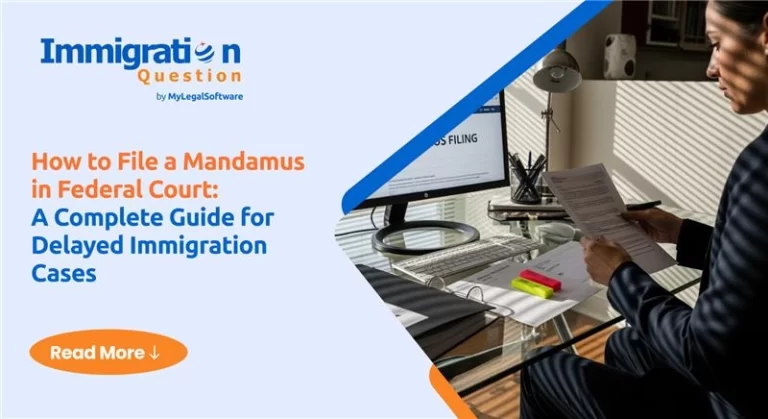Understanding New Immigration Policies in 2025
As we approach 2025, the future of U.S. immigration policies is a topic of significant debate and concern. Past administrations, particularly the Trump administration from 2017 to 2021, implemented radical changes to immigration systems. Looking forward, the proposed changes under Trump’s Project 2025 tell us the potential legal changes likely to affect visa processes and other immigration activities.
In this article, we will examine past immigration reforms, analyze the 2025 updates, and consider potential policy implications for immigrants.
Trump’s Initial Immigration Policies (2017–2021)
Between 2017 and 2021, the Trump administration made significant legal changes to immigration policies. These reforms were primarily driven by the “Buy American and Hire American” (BAHA) Executive Order issued in 2017. While BAHA was designed to protect U.S. workers, its implementation created numerous challenges in visa processes and employment-based immigration programs.
BAHA resulted in the following:
- Rise in H-1B Denials and Requests for Evidence (RFEs): BAHA imposed stricter scrutiny on H-1B petitions, leading to a surge in Requests for Evidence (RFEs) and denial rates. The high denial rate posed a challenge for employers trying to meet workforce needs.
- Stricter Visa Processing Standards and Extended Delays: Employment-based visa categories had a more stringent vetting process. During this time, employers found it challenging to meet business travel objectives.
- Changes in Green Card Application Policies: The administration tightened the adjudication standards for green card applications. Highly skilled workers face challenges in obtaining long-term immigration status.
These legal changes set the stage for the current debates around immigration reform and provide context for the proposed 2025 updates.
2025 Updates to Expect | New Immigration Policies in 2025
Former President Trump’s Project 2025 outlines a controversial vision for immigration reform, with several radical proposals that could reshape U.S. immigration policies. Components of this plan include legal changes to visa processes, increased enforcement, and potential humanitarian consequences.
Proposed Changes Under Project 2025
1. Nationwide Deportation
One of the most contentious proposals is enabling Immigration and Customs Enforcement (ICE) to use expedited removal processes nationwide. This procedure raises concerns about due process and the potential for overreach, especially with plans to conduct raids in locations like schools, hospitals, and religious institutions.
Trump plans to invoke sections of the Alien and Sedition Acts of 1798 to fast-track deportations of individuals deemed threats. By bypassing lengthy legal proceedings, this measure aims to reduce delays in enforcement. However, the use of the old law raises constitutional concerns. Lawyers argue that applying these outdated statutes to modern immigration cases could cause judicial scrutiny and social uproar.
2. Militarizing the Border
Continuing the construction of a border wall is a cornerstone of Trump’s 2025 updates. The plan also calls for deploying military personnel (U.S. Navy and Coast Guard) and equipment to the U.S.-Mexico border. Additionally, it seeks to increase barriers for asylum seekers and expand border wall construction.
Although the blockade is proposed as a security extension, it can cause complex policy implications, like diplomatic conflicts with Latin America. This plan may damage trade and political relations. Additionally, the high costs of maintaining a maritime blockade may outweigh its intended benefits, especially if it diverts resources from addressing the root causes of drug trafficking.
3. More Immigrant Detention Centers
The proposed expansion would more than double the current capacity of detention centers, potentially detaining up to 100,000 immigrants at a time. Many undocumented individuals, regardless of whether they pose public safety or flight risks, may be detained. The launch of this amount of detention centers will likely extend deportation timelines.
4. Cancelling Relief Programs and Visa Categories
The 2025 updates aim to eliminate protections for Dreamers, Ukrainians fleeing war, and others under Temporary Protected Status (TPS). These changes would revoke work authorization for hundreds of thousands of immigrants and reduce the availability of both temporary and permanent visas.
5. Introducing Ideological Screening
Trump plans to start ideological screening for individuals seeking entry into the U.S. This measure revives an old provision blocking communists, Nazis, and other totalitarian party members from immigrating. However, the application of these legal changes extends beyond historical standards.
Under the proposed updates, applicants could face denial based on perceived ideological leanings. The subjective interpretation of such terms raises concerns about potential misuse. Immigration authorities may analyze applicants’ social media accounts and digital histories to determine their beliefs, which raises privacy issues and fears of political discrimination.
6. Expanding Travel Bans
Trump’s immigration strategy revisits the controversial travel restrictions commonly called the “Muslim ban.” Unlike its earlier form, which targeted predominantly Muslim and African countries, it is proposed to broaden its reach to include nations perceived as security threats.
The ban is argued to violate international human rights laws and is considered discriminatory. The expansion also risks alienating U.S. allies and undermining the nation’s reputation as a global leader in promoting freedom and diversity.
7. Cartels as Unlawful Enemy Combatants
Trump’s Project 2025 seeks to designate drug cartels as “unlawful enemy combatants.” This designation would allow the U.S. military to target cartel operations directly, even across international borders.
Although this measure offers an aggressive approach to combating drug trafficking, its implementation could escalate tensions with Mexico, where many of these operations are based. The U.S. risks violating international law by conducting military actions on foreign soil without consent, which could lead to retaliatory measures. Additionally, this policy blurs the lines between military and civilian law enforcement responsibilities.
8. Ending Birth right Citizenship
Another controversial aspect of Trump’s immigration policies involves ending birth right citizenship for children born to undocumented immigrants in the U.S.
Many fear that revoking birth right citizenship could result in an increase in status-less individuals. Such a measure also raises logistical challenges in determining the citizenship status of new-borns, which may increase administrative burdens on federal agencies.
9. Imposing Financial and Health-Related Barriers
Trump’s 2025 updates also include measures to tighten financial and health-related requirements for immigrants. Applicants may be required to demonstrate their ability to afford private health insurance.
This measure is to ensure that immigrants do not burden public resources. However, they can create financial barriers, favoring wealthier individuals over low-income applicants. These legal changes may lead to excluding skilled workers and families who lack the means to meet these stringent requirements but have the potential to contribute significantly to the U.S. economy.
Policy Implications and Future Trends
The legal changes and policy implications of Project 2025 could have severe consequences. Stricter visa processes, heightened deportation measures, and reduced protections for vulnerable immigrant populations are likely to create new challenges for employers and families. These challenges include:
- For Employers: The proposed reforms would spike difficulties in securing international talent. Lengthier visa processes and reduced visa categories could hinder workforce planning and innovation in industries reliant on specialized skills.
- For Immigrants: Eliminating protections and expanding enforcement measures would create uncertainty for millions of individuals, disrupting lives and livelihoods.
- For the Economy: Reduced access to international talent and increased deportations could negatively impact sectors like healthcare, technology, and agriculture, which rely on immigrant workers.
Future Trends to Watch – New Immigration Policies in 2025
1. Increased Demand for Immigration Attorneys
As visa processes become more complex, individuals and businesses will require professional legal guidance to navigate the system.
2. Advocacy for Comprehensive Reform
Advocacy groups may push for bipartisan solutions to balance law enforcement with humanitarian concerns.
3. Global Talent Shift
Stricter policies may drive highly skilled immigrants to seek opportunities in other countries. This shift may impact the U.S.’s position as a global innovation leader.
The 2025 updates to immigration policies show a potential shift toward stricter enforcement, reduced visa approvals, and more barriers to immigration. These 2025 updates will shape immigration policy and highlight how the U.S. views immigrants and their contributions.
Understanding these future trends is essential to adapting to change and advocating for reforms that balance national interests with humanitarian principles. Employers, immigrants, and policymakers must prepare for the legal changes and policy implications that lie ahead.








